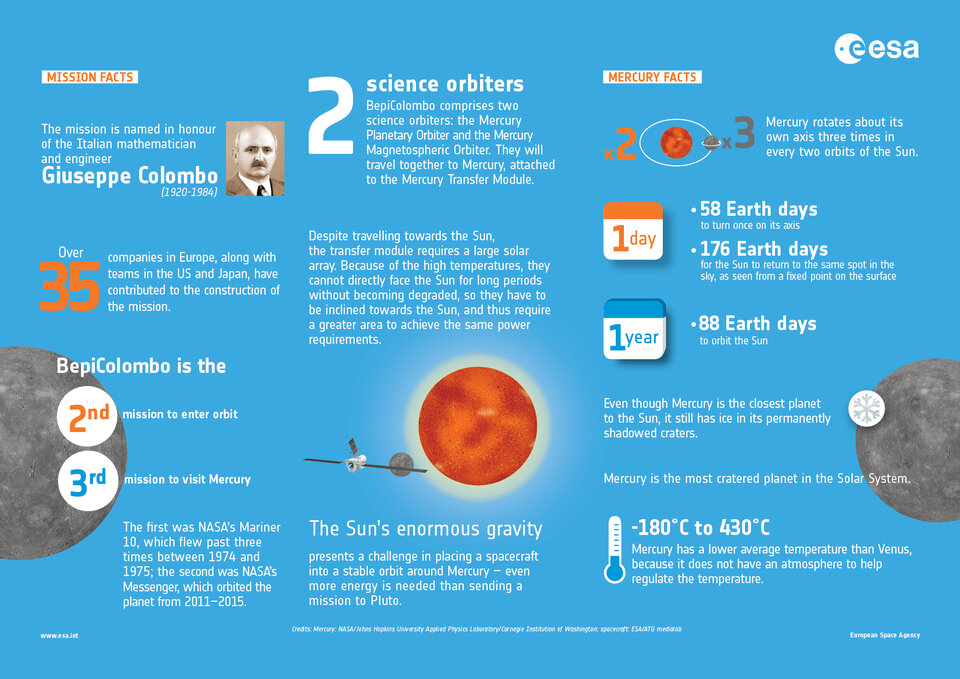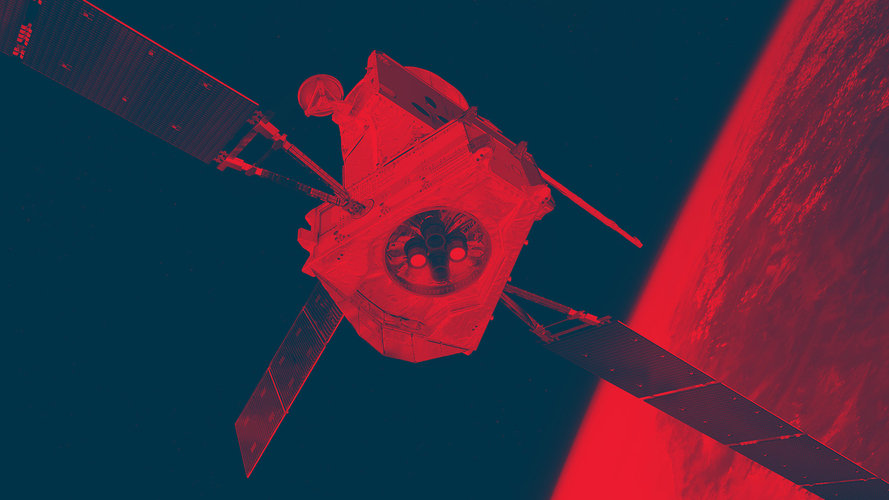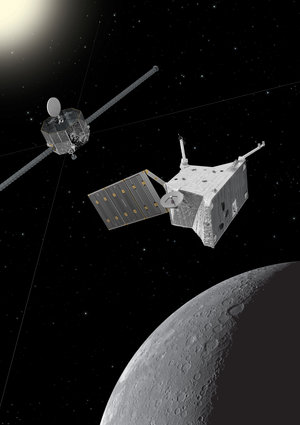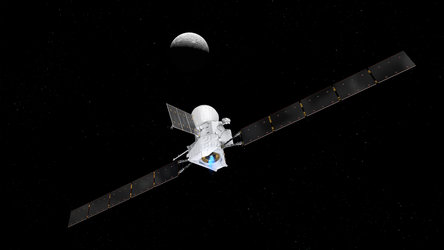BepiColombo factsheet
Name: BepiColombo
Spacecraft: Mercury Planetary Orbiter (MPO), Mercury Magnetospheric Orbiter (MMO), and the Mercury Transport Module (MTM)
Mission: To investigate Mercury, the innermost and least explored planet in the inner Solar System.
Launch date: 19/20 October 2018
Launch vehicle: Ariane 5
Launch mass: 4100 kg, including 1400 kg of propellant, the 1230 kg MPO (of which 85 kg is science payload) and the 255 kg MMO (of which 45 kg is science payload)
Dimensions:
Composite spacecraft: 3.9 x 3.6 x 6.3 m (~30 m with MTM solar wings deployed)
MPO: 2.4 x 2.2 x 1.7 m; radiator width: 3.7 m, solar wing (deployed): 7.5 m
MMO: 1.8 m diameter, 1.1 m high

Journey milestones:
Launch: October 2018
Earth flyby: 10 April 2020
First Venus flyby: 15 October 2020
Second Venus flyby: 11 August 2021
First Mercury flyby: 1 October 2021
Second Mercury flyby: 23 June 2022
Third Mercury flyby: 20 June 2023
Fourth Mercury flyby: 4 September 2024
Fifth Mercury flyby: 1 December 2024
Sixth Mercury flyby: 8 January 2025
Arrival at Mercury: November 2026
MPO reaches science orbit: Early 2027
End of nominal mission: April 2028
End of planned extended mission: April 2029
MPO instruments:
BELA: BepiColombo Laser Altimeter
ISA: Italian Spring Accelerometer
MPO-MAG: Magnetic Field Investigation
MERTIS: Mercury Radiometer and Thermal Infrared Spectrometer
MGNS: Mercury Gamma-ray and Neutron Spectrometer
MIXS: Mercury Imaging X-ray Spectrometer
MORE: Mercury Orbiter Radio science Experiment
PHEBUS: Probing of Hermean Exosphere by Ultraviolet Spectroscopy
SERENA: Search for Exosphere Refilling and Emitted Neutral Abundances
SIMBIO-SYS: Spectrometers and Imagers for MPO BepiColombo Integrated Observatory
SIXS: Solar Intensity X-ray and particle Spectrometer
MMO instruments:
MMO-MGF: Mercury Magnetometer
MPPE: Mercury Plasma Particle Experiment
PWI: Mercury Plasma Wave Instrument
MSASI: Mercury Sodium Atmosphere Spectral Imager
MDM: Mercury Dust Monitor
Partnerships:
BepiColombo is a joint endeavour between ESA and the Japan Aerospace Exploration Agency, JAXA.
JAXA provides the Mercury Magnetospheric Orbiter and ESA provides the Mercury Planetary Orbiter, the Mercury Transfer Module, and the Mercury Magnetospheric Orbiter’s Sunshield and Interface Structure (MOSIF).

Mission facts
- The mission is named in honour of the Italian mathematician and engineer Giuseppe (Bepi) Colombo (1920–84).
- Over 35 companies in Europe, along with teams in the US and Japan, have contributed to the construction of the mission.
- BepiColombo will be only the third mission to visit Mercury, and the second to enter orbit. The first was NASA’s Mariner 10, which flew past three times between 1974 and 1975; the second was NASA’s Messenger, which orbited the planet from 2011–2015.
- BepiColombo comprises two science orbiters: the Mercury Planetary Orbiter and the Mercury Magnetospheric Orbiter. They will travel together to Mercury, attached to the Mercury Transfer Module.
- Despite travelling towards the Sun, the transfer module requires a large solar array. Because of the high temperatures, they cannot directly face the Sun for long periods without becoming degraded, so they have to be inclined towards the Sun, and thus require a greater area to achieve the same power requirements.
- The Sun’s enormous gravity presents a challenge in placing a spacecraft into a stable orbit around Mercury – even more energy is needed than sending a mission to Pluto.
Mercury facts
- Mercury rotates about its own axis three times in every two orbits of the Sun.
- Mercury was named so by the Romans, after the messenger of the gods.
- Even though Mercury is the closest planet to the Sun, it still has ice in its permanently shadowed craters.
- Mercury has a lower average temperature than Venus, because it does not have an atmosphere to help regulate the temperature.
- A day – from noon to noon – on Mercury lasts 176 Earth days, but a year is only 88 days.
- Mercury is the most cratered planet in the Solar System.








